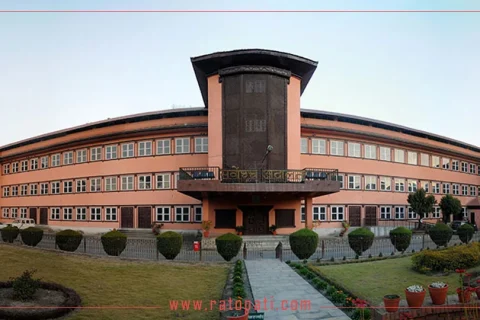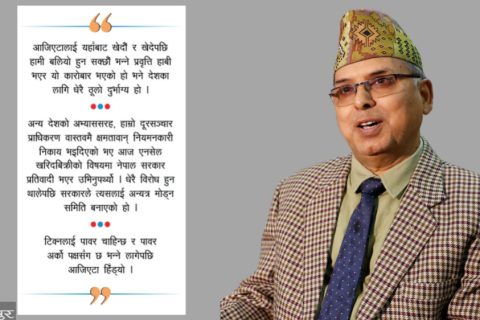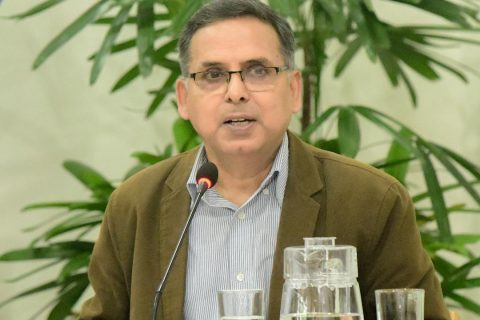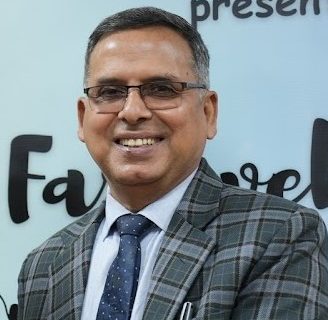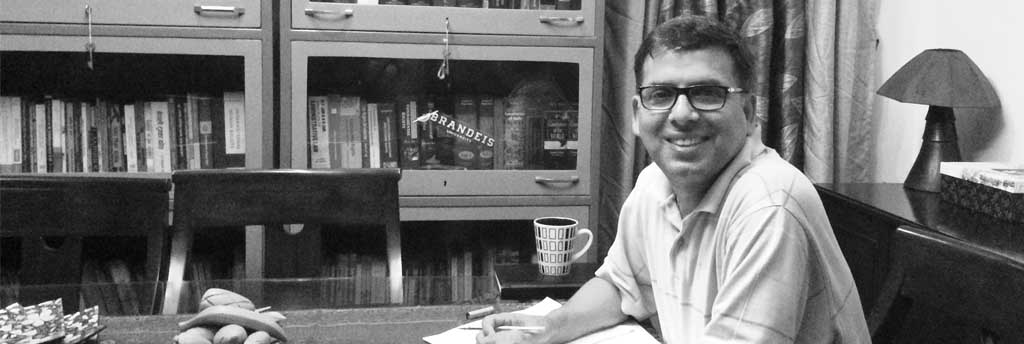
“The hundred-day deadline has just passed for the promulgation of Nepal’s long-awaited new constitution. But there is little optimism that this date will be met.”
Shortly after Madhav Kumar Nepal was elected chairman of the Constitutional Committee of the Constituent Assembly, in January 2009, he brought together some 25 Nepali lawyers for a meeting. As a consensus candidate agreed by the major political parties, he had been brought into the House as a nominated member to lead this committee, even though he had lost the election of April 2008 – and, therefore, access to the Assembly. After accepting the responsibility of leading the principal drafting body at the Constituent Assembly, the senior Communist Party of Nepal (Unified Marxist-Leninist) leader – and current prime minister – wanted to meet with the constitutional lawyers to discuss how to move ahead with the technical aspects of the constitution-drafting work, the primary purpose of the Constituent Assembly.
During the course of the meeting, he took the opportunity to discuss the process that had been followed thus far by the Constituent Assembly since it came into existence on 28 May 2008, as well as the process of drafting the statute and easing ongoing irritations. Some of the lawyers assembled were quick to explain how, in the history of constitution-making, some able individuals (such as James Madison or Alexander Hamilton in the US, or B N Rau or Bhimrao Ramji Ambedkar in India) had been crucial to drafting the document, while involving others in the process. The immediate question from Chairperson Nepal, who is known for his simplicity, was “Tell me, jurists, from among all of you, or those in the Constituent Assembly, who could qualify to be James Madison or B N Rau for us?” Everybody smiled and looked at each other, but there was no answer.
Four months later, Madhav Nepal went on to become prime minister, and a jurist from the House, Nilambar Acharya, took over his position as chairperson. But the question remains unanswered. Indeed, the problem with Nepal’s Constituent Assembly is not just that it has neither a technical team of experts nor elected legal or constitutional talents working with the drafting body inside the House; rather, the issue goes far deeper.
At the outset, it must be stated that the Constituent Assembly, tasked with writing a new constitution and fundamentally reshaping the government as part of the peace process, has already completed 21 out of the 24 months mandated for it to do its job. A body of 601 members – of which 240 were elected in a direct vote, another 335 came to join on the basis of proportional representation, and the remaining 26 were nominated by the government leading the transition – is no doubt a particularly inclusive, heterogeneous group, and one that is, the most representative assembly that Nepal has ever seen. It represents most of the country’s political forces, from the revolutionary Communist Party of Nepal (Maoist) to the regionalist Madhesi Janadhikar Forum, as well as a variety of fringe parties. As the first inclusive body to represent Nepal’s multi-religious, -lingual and -ethnic communities, it is a mosaic of Nepali diversity and pluralism. “It is the House of peasants, the House of industrialists and the House of the marginalised people,” The chairman of the Constituent Assembly, Subhas Nemwang, said to an international audience on 15 January. “It is set to work on the new constitution for Nepal as part of the comprehensive peace process that the country is passing through.”
This House is to restructure the state, establish the identity of indigenous communities and minority groups; end all discrimination based on ethnicity, language, culture and religion, and regional diversity; end all forms of feudalism; and establish a new Nepal. As a prelude, the 1990 Constitution was withdrawn, an interim constitution was enacted declaring Nepal to be secular. (This had little check and balance as when compared with the constitution that it replaced), citizenship certificates were issued to millions, the electoral system was modified, and a proportional system of representation was introduced, all before holding the elections to the Constituent Assembly on 10 April 2008. The Fourth Amendment to the Interim Constitution even declared the country to be a federal set-up, before any discussion on the issue took place in the House. No sooner had the first meeting of the Constituent Assembly taken place than it abolished the monarchy, and gave 15 days to the king and his family to leave the Narayanhiti Palace. Things were getting done, it appeared, at breakneck speed.
Vague committees
The Assembly has 11 thematic committees, tasked with producing a concept paper and preliminary draft in the constitutional area that each had been allocated. All committees are of equal strength and capacity, and are empowered to make proposals to the full House. By now, all of these committees have done their work. But as expected, their reports are not unanimous – sometimes mere majority formulations, or not even that, and most include dissenting opinions. After arguing for the past year, for example, the Committee on the Determination of the Form of Government submitted its report to the full House with almost four options as to what form of government Nepal should adopt in the changed context. Their task, of course, had been to decide on one. In the absence of clear direction as to the form of government (parliamentary, presidential, or mixed?), the rest of the work that the Constituent Assembly has so far accomplished looks something like a Statue of Liberty without a head.
It is the Constitutional Committee that has the responsibility for formulating the final draft, for which it is to build on both the thematic reports and the recommendations and directions of the full House, following debate on each committee report. From the beginning the idea has been to draft the constitution according to a bottom-up approach – even the committees did not rely on any draft prepared by experts in finalising the preliminary draft proposals, instead starting from scratch. By 5 March, the Constitutional Committee is expected to bring out the first draft of the constitution, in accordance with a schedule that has now been revised seven times. Yet the job seems ominously difficult, given that the committees have resolved little on matters where there are major differences, particularly between the Maoists and the rest. Indeed, only one report seems to be relatively finalised, that of the Committee on the Allocation of Natural Resources, Financial Powers and Revenues. Instead, the committees have helped to further polarise the political parties.
According to the Interim Constitution, the final draft of the constitution, following public consultation and debate, must be taken to the plenary meeting of the Constituent Assembly, which is then to undertake a clause-wise discussion and vote. Once there is agreement on each provision, the entire draft is to be taken for adoption by the House before its promulgation. According to the present interim arrangement, the new constitution must be adopted and promulgated by the end of two years – ie, by 28 May 2010. But very few are optimistic that the Assembly would be able to do following this schedule.
Dealing with undoubtedly one of the most controversial issues, the Committee on State Restructuring and Allocation of State Powers only recently published its report, reaffirming its contentious commitment to re-design Nepal on the basis of federalisation along ethnic lines. Many have long warned that a 14-province Nepal, out of which seven have been given ethnicity-based names (such as Newa, Tamuwan and Limbuwan) would come with in-built discriminatory arrangements – in a country that is said to have 103 ethnic categories, this proposal is sure to arouse ethnic sensitivities of the neglected lot more than ever. Further, there are very few who believe that such a set-up would be economically workable; the federal arrangement is not asymmetrical, all provincial units are treated by the same standards as far as centre-state relations are concerned, and little attention has been given to reasonable farmland claims, capacity and potentials of each province. Provinces such as Jadan and Sherpa will not be able to feed their people for even a month with their existing farmland capacity. There is cynicism regarding the demarcation of the provinces, and also the basis on which their size is determined, while the report contains nothing about how an ethnic division is going to secure a competitive advantage for the inhabitants in each province or for the country as a whole. Critics suggest that these provinces will barely be able to survive for a half-year.
There are also problems with the exhaustive list of fundamental rights and directive principles of state policy released by the Committee on Fundamental Rights and Directive Principles. While it is very liberal, as much as it identifies the basic rights of the Nepali people, the list is without judicial sanction in most of the cases involving the economic, social and cultural rights. The responsibility is placed in the government to pass the necessary laws and implement them within two years. Yet one can easily see that such a demand placed on the shoulders of the state is too heavy, particularly without considering how a non-performing economy can help the state to fulfil such requirements. The report of the Committee on the Rights of Minority and Marginalised Communities has also created controversies by putting forth ambiguous provisions as to the compensation to be paid by the state to certain communities for past abuses against them. In the same vein, the Committee on Determination of Structure of Constitutional Bodies has proposed 11 independent commissions to deal with issues specific to Madhesis, Dalits, indigenous peoples and others, substantially limiting the role of the elected government in the affairs of the state.
The report of the Committee on Judicial System recommends many questionable provisions in the new constitution, which belittle the parameters of the Supreme Court as the guardian of the constitution. It robs the power of judicial review from the Supreme Court, which can neither interpret the constitution in any significant sense, nor can it judge upon the constitutionality of any law where it matters most. The report also makes sure that the Supreme Court and its judges are under parliamentary control in all matters relating to their appointment, dismissal and the job of judicial decision-making. A Special Judicial Committee is provided for in both the central and provincial legislature to take care of these issues. Yet a federal system cannot work in a society where the federal Supreme Court does not have the power to interpret what the constitution says, and decide on the controversies regarding the division of powers between the federal and constituent units. Without the power of judicial review, and the ability to strike down a legislation that contradicts the constitution, a Supreme Court cannot maintain the supremacy of the constitution.
Similarly, the report of the Committee on Determination of the Form of Legislative Organ is insufficiently conceived. It is not clear whether the legislature is supposed to be a presidential set-up, or parliamentary or ‘mixed’. Further, the report of the Committee on the Preservation of National Interest has not been able to provide for a credible arrangement for the country’s defence forces. Admittedly, the issue must be kept outside day-to-day politics, and attempts to bring abrupt change in the institution must be resisted. However, the committee’s suggestion to establish a national defence council, where there is no representation of the chief of army staff, cannot be considered anything but a wild arrangement, serving neither democracy nor any national interest. The provision of compulsory military training to youths without the leadership and support of a disciplined army is also not a viable concept. While many successful small states do practice this to some extent, the provision serves only when there is explicit determination to keep the army out of any military alliance, soft or hard, and its politicisation can be thoroughly prevented.
Finally, the work so far done includes no economic vision for the state. For instance, the current recommendations do not even consider, much less take a position on, how to preserve access to a secure and reasonably priced supply of oil in place of the current India guarded supply system. There is also no direction about the national food-security strategy, a constant and crucial issue. Further, it is questionable how a country can preserve its national interest without a clear concept on how to deal with internal security challenges such as climate change, floods and natural disasters affecting a large segment of the people.
Miracles?
As referred to by Madhav Kumar Nepal’s question at the beginning of this article, all these drafts have suffered in the absence of outside technical support. Most of the important modern examples of success in getting a new democratic constitution through an elected constituent assembly have something in common: the presence of a charismatic leader who commands the confidence of the House and the people at large, and is able to give necessary patronage to the process. There are a few other factors in common, too: for instance, the presence of a party in the assembly that not only speaks to the conscience of the people, but also keeps necessary political clout to push the document through. Also important is negating ideological gaps between the dominant party and the others, in terms of commitment to liberal democracy, the basic values of limited government and the rule of law. Also, that all involved look forward to building a nation with positive energy and forward-looking strategies, rather than looking back and scolding the past in order to build the future.
For example, the Indian Constituent Assembly certainly satisfied these requirements. Few can miss, for instance, the critical patronage of Mohandas K Gandhi, and the overriding presence and clout of the Indian National Congress. Also, very few points of divergence emerged between the Congress and other smaller groups, while general commitment on the part of the political actors to build the nation on the strength of liberal values was extremely helpful. Indians were determined to throw off the yoke of Great Britain, but were not ready to dispense with the virtues of Westminster-inspired institutions, which they believed provided a model for Indian democracy. This is true of South Africa as well.
Worryingly, these common attributes are hardly to be seen in the Constituent Assembly of Nepal. While this body is very promising in terms of its composition, for better or worse the Constituent Assembly is today a divided House – politically, as well as in its long-term determination. There is no choice but to move on, but to enact a new constitution within the next three months is very difficult. Importantly, the Interim Constitution, which defines the role of the Assembly, does include a chapter on constitutional amendment, but it does not suggest anywhere that this chapter could be used to prolong the constitution drafting time frame. It is also true that there are no express limitations on the power of the Parliament to amend the constitution. But exercising the power of the Parliament to prolong the tenure of the House could be counterproductive, as by now the people of Nepal know that things are not merely black and white. At the moment, the only sustainable way forward seems be to go for a framework constitution that represents the existing consensus in Nepal’s political society, leaving the rest of the issues for the future. The parties could thus go ahead with the existing institutions where there is no consensus.
Many Nepalis believe in last-minute ‘miracles’. In this context, such a miracle would include a framework constitution (as this writer and other lawyers have suggested), or by extending the tenure of the House for another six months, as many of the Assembly members are urging. More broadly, however, the problem of Nepal’s constitutional development lies not merely with the House. Even if the new constitution is finalised and promulgated, after all, it might still collapse the way the last five constitutions collapsed – without even knowing the factors that caused their demise. No matter how good the constitution or how democratic the people, Nepal’s geophysical situation makes peace and stability difficult – though both can be helped by the stable underpinnings of a solid constitution.




